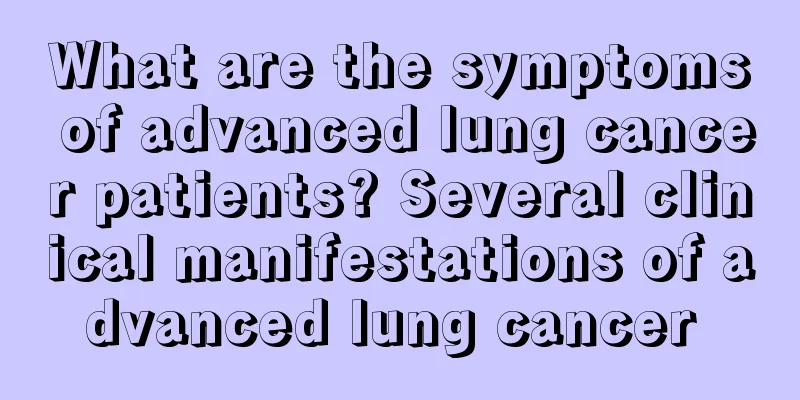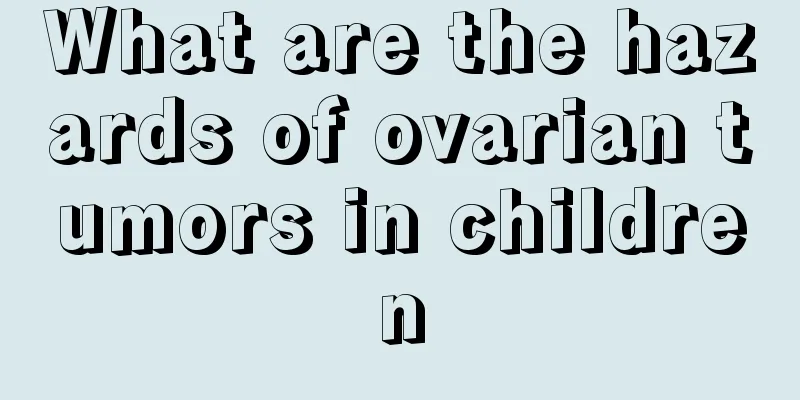What are the symptoms of advanced lung cancer patients? Several clinical manifestations of advanced lung cancer

|
The symptoms of lung cancer vary at different stages. In the early stages, the symptoms may not be very obvious, so they are easily ignored. However, if the patient's condition reaches the late stage, the symptoms will be very obvious. So, what are the symptoms of lung cancer in the late stage? What are the symptoms of lung cancer? Cancer is still a mystery in the medical field, especially in the middle and late stages of cancer. Once the lesion is found, it means death. Lung cancer, like other cancers, is a major enemy that threatens human life, health and safety. Lung cancer patients may show severe functional disorders of the lungs in the late stage, and the following pathological characteristics may occur. The most common symptom of lung cancer in the late stage is hoarseness. The recurrent laryngeal nerve that controls the left side of the vocal function descends from the neck to the chest, bypasses the large blood vessels of the heart and returns upward to the larynx, thus controlling the left side of the vocal organ; there is a superior vena cava on the right side of the mediastinum, which transports venous blood from the upper limbs and head and neck back to the heart. If the tumor invades the right side of the mediastinum and compresses the superior vena cava, it will initially cause the jugular vein to become distended due to poor blood flow, and eventually lead to edema of the face and neck, which needs to be diagnosed and treated promptly; if it invades the pleura, it can cause pleural effusion, which is often bloody. Large amounts of effusion can cause shortness of breath. In addition, cancer invasion of the pleura and chest wall can cause persistent and severe chest pain. With the functional disorder of the lungs, local edema and neuralgic pain may also occur. The upper lobe of the lung may invade and compress the organs and tissues located at the upper opening of the thorax, such as the first rib, subclavian artery and vein, brachial plexus, cervical sympathetic nerve, etc., resulting in severe chest pain, upper limb venous distension, edema, arm pain and upper limb movement disorder, ptosis of the upper eyelid on the same side, pupil constriction, enophthalmos, facial anhidrosis and other cervical sympathetic nerve syndrome. After lung cancer metastasizes through the blood, different symptoms will occur according to the invaded organs. What are the symptoms of lung cancer? This article introduces the common pathological characteristics of lung cancer. The appearance of lung cancer is first due to the formation of lesions in the bronchi and alveoli, which will cause hemoptysis, and then manifest as secondary infection of tissues and organs such as the pleural membrane. I hope that the introduction of this article can enhance everyone's understanding of lung cancer. What are the symptoms of advanced lung cancer? The above content has already made a very detailed introduction to this issue. The sooner lung cancer patients receive treatment, the better, so it is necessary to understand the symptoms of lung cancer. However, if you find yourself with these advanced lung cancer symptoms, then you may be alert and must seek treatment immediately. |
Recommend
What are the diet recipes for lung cancer
Nutritional diet for lung cancer patients. Lung c...
What are the symptoms of eye tumors
Eye tumor is a malignant eye disease. Its cause m...
How to implement the prevention of cardia cancer
The incidence of cardiac cancer is also quite hig...
Does pumpkin help to reduce milk production or increase lactation? What Nutrition Is in Pumpkin?
Mothers who have just given birth do not want to ...
Will colon cancer affect pregnancy?
Colorectal cancer is a malignant tumor of the dig...
Chamomile skin care products
In our daily life, all kinds of objects can make ...
The functions and effects of enzyme soap
Enzyme soap is more effective than other soaps. I...
What diseases can be transmitted by eating together
If you are eating together, try to use separate t...
What is the best way to remove dental plaque
Many friends do not pay attention to their oral h...
What are the symptoms of advanced lung cancer? There are 4 symptoms of advanced lung cancer
Lung cancer is a relatively common malignant tumo...
Dandelion cures hair loss
Hair loss troubles many people, and some people a...
What are the causes of osteosarcoma
Before introducing the causes of osteosarcoma, le...
I want to go to the toilet after drinking a little water
We all know that kidneys are very important to hu...
What foods can and cannot be eaten in the early stage of gastric cancer
In the early stages of gastric cancer, people can...
What disease is tooth numbness a sign of?
Dental health is very important because teeth are...









